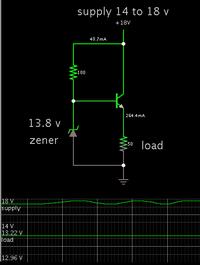L_jack_xing
Junior Member level 2

My target is 3 output flyback convertor,the main output is 5V/3A,the auxiliary output is ±13V/0.25A.There is a problem when the 5V output load 3A and ±13V unload,the voltage of ±13V will get to ±18V.Is there any solution can make ±13V not over ±14.5V in this situation?Another, the No-load power consumption must be under 0.5W .And postregulation,mag amp is not allow to use.Thanks for your help.:-D




